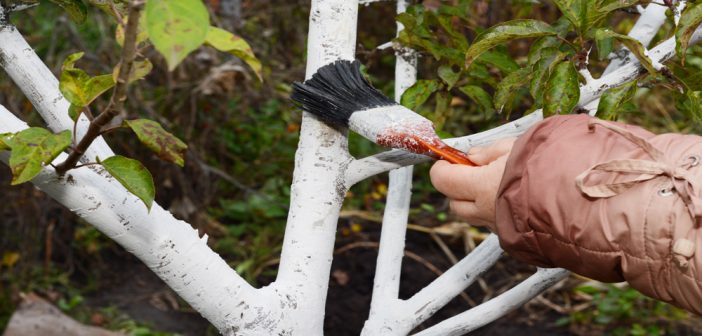As the summer heat intensifies, your garden may struggle to maintain its beauty. Leaves may begin to wilt or you may notice spots appearing. If your garden looks like someone splattered paint all over your plants, then you have sunscald. Sunscald is damage that happens to plant tissue, because of overexposure to the sun.
How to Know if Your Plants Have Sunscald?
Whitish spots on the leaves, is a tale-tale sign that your garden is suffering from sunscald. These spots may also turn a brownish shade once the damage has set in and that part of the plant starts to die from the damage.
How to Prevent Sunscald
There are many ways you can go about preventing sunscald. Paint the base of your fruiting trees with a white latex paint and mulching around that base will help your trees. Another process that helps prevent sunscald is to harden off your plants before planting them in the ground. This helps the plants adjust to the intense heat and dry conditions.
When hardening your plants…
• Allowing your seeds and immature plants a few hours of sunlight in a sheltered location
• Slowly increase sun exposure by a few hours at a time per day and reduce the watering frequency
o Keep an eye on your young plants and do not let them wilt
o Do not use any fertilizer
The hardening process should be spread out over a 7-10 day period, up to 14 days to guarantee that your plants will be ready to be transplanted in their sunny locations. When you transplant the plants, water them well and apply a weak fertilizer solution so they do not suffer from transplant shock and start growing again.
Shade
Protect your plants from sunscald by providing them shade during the peak hours of the day. If your plants are potted, move them to a location where the sun is less intense. This location could be a covered patio area or under the shade of a tree.
Tips for Protecting in-ground Vegetation…
• Proper plant placement goes a long way in protecting your garden. Plant in areas with the proper amount of sunlight. For example, some plants require full sun so these would be ok to plant someplace where they would get 8+ hours of sun per day. Some other plants may only require part sun, so these plants should be placed someplace where the sun is only concentrated on that area for 4-6 hours and no more than 8.
• Supplement shade through the use of a bed sheet or light fabric. Light colors work best as they will reflect more sunlight relieving the stress of the hot sun from your plants. You can also create a canopy that will help protect your plants. Stake them down and attach a piece of cloth, you have an instant canopy.
Mulch
Another fantastic way to help avoid sunscald is to mulch. Placing mulch around the base of your plants acts as a barrier for moisture. The mulch will catch the moisture trying to escape and release it back into the ground. This is a wonderful way to prevent your plants from drying out due to excess heat.
Water
To avoid your plants from drying out and getting sunscald, keep them watered. Sun-loving plants, such as tomatoes, peppers or strawberries, should be watered more often and thoroughly. Water early in the morning or during the evening, this will ensure your plants are well watered.
Treating Sunscald
If you notice white splotches on your plants, usually found in the higher layers of leaves or upper parts of your fruits and vegetables, jump to action. First, remove any seriously damaged plant parts. Clip off leaves that are discolored. Any fruits or vegetables that are encompassed by sunburn should be removed as well. However, if the damage is minimal, do not remove anything. Next, shade your plants to reduce their temperature. This will give the plant some much needed rest. Finally, thoroughly water your plants. Remember, be patient when trying to revive your plants back to their fruitful glory.









